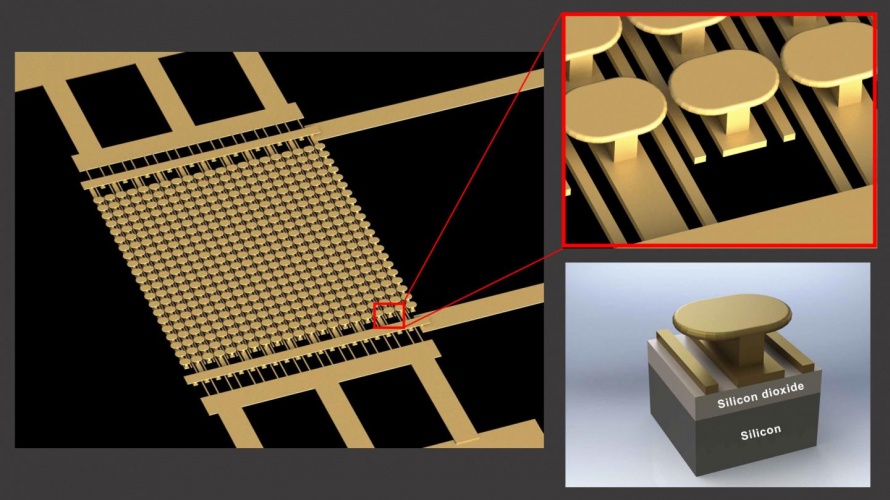Researchers at the University of California San Diego have developed what they say is the world’s first semiconductor-free, optically-controlled microelectronic device, which could lead to faster electronics and more efficient solar panels.

Semiconductors are at the heart of modern computing devices but are approaching the physical limits of what they can achieve using current materials. As a result, Moore’s Law - which predicts that computing power should double every two years - is no longer holding true.
To overcome this problem, the UC San Diego engineers replaced the electrons flowing through semiconductors with free electrons floating in space, similar to the vacuum tubes of early computing, but on a nanoscale. But liberating electrons from materials is difficult, requiring either high voltages, high temperatures or high powered lasers, none of which are practical for microelectronics.
However, the team was able to fabricate a device that releases electrons without the need for these extremes. Described in the journal Nature Communications, it consists of a gold metasurface with mushroom-shaped nanostructures on an array of parallel gold strips.This sits on top of a silicon wafer, with a layer of silicon dioxide in between.
When a low DC voltage (less than 10 Volts) and a low power infrared laser are both applied, the metasurface generates "hot spots" with a high-intensity electric field, which provide enough energy to pull electrons from the metal and liberate them into space.Tests on the device showed a 1,000 per cent increase in conductivity when activated.
"This certainly won't replace all semiconductor devices, but it may be the best approach for certain specialty applications, such as very high frequencies or high power devices," said electrical engineering professor Dan Sievenpiper at UC San Diego’s Applied Electromagnetics Group.
"Next we need to understand how far these devices can be scaled and the limits of their performance."
According to researchers, this particular device was designed as a proof-of-concept, and different types of metasurface will need to be designed for different types of microelectronic devices.




Poll: Should the UK’s railways be renationalised?
I think that a network inclusive of the vehicles on it would make sense. However it remains to be seen if there is any plan for it to be for the...